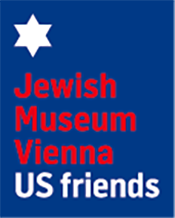About Searching and Finding
Feb 5, 2021 | JMW News

Actually, a blog article on the “New Year of the Trees” (Hebrew: Tu BiShvat), celebrated this year on January 28th, was planned. On January 27, 1945, the Auschwitz-Birkenau concentration and extermination camp was liberated by the Red Army. In 2005, the United Nations established this date as International Holocaust Remembrance Day. Two texts. Two themes. Two dates. The Jewish Museum Vienna collection is very extensive and recorded in a database containing information on technical data, material, age, size, condition and always an object history. Since objects, the things in the showcases, cabinets and drawers, always tell stories in a multidimensional way, there are many relationships that things have with other things. The bridges between things are the stories they tell and thereby – sometimes without being asked – refer to other things.

Image © JMW
“To transform the desert into a blooming garden, the preparation of the soil, the laying out of gardens and forests, the proper irrigation – this is beyond the capacity of the state. Such a grandiose undertaking requires the extensive, concentrated effort of the whole people – and its best instrument for developing the desert is the JNF-KKL,” said David Ben-Gurion, Israel’s first Prime Minister, in 1948.
The Jewish National Fund, founded by Johann Kremenetzky in Basel in 1901 at the instigation of Theodor Herzl, primarily arranged land acquisitions for Jewish settlers in the British Mandate until the State of Israel was established. Since the founding of the State of Israel in 1948, the cultivation and afforestation of the country have been one of the most urgent tasks organized by the Ministry of Agriculture and Rural Development. The Hebrew name is “Keren Kayemeth Leisrael” and literally means “Eternal Fund for Israel.” These initiatives can be supported anywhere through the donation of trees or water, which is easily possible via the homepage https://jnf-kkl.info/. The rainy season in Israel ends at Tu BiShvat, the almond trees are in bloom, and trees are planted in many places in the scope of events. Donation cans such as those represented in the Eli Stern Collection were used for analogue donations.

Image © JMW
Entering the search term “Keren Kayemeth Leisrael,” KKL for short, into the museum’s inventory database yields two surprising discoveries.

Image © JMW
This photo is part of a quite extensive collection of photographs given to the museum by Eva Kristen, a former employee of the KKL Austria. She received it from a lady who had looked after a survivor, Mr. Kurt Bergmann, until his death in 2003, and who had been appointed by him as his heiress. She renounced the inheritance, but wanted the photos to be safe and passed them on to the KKL. Eva Kristen thought of the international Simon Wiesenthal Center as a worthy storage place for the photos, which the Center would only have wanted if Simon Wiesenthal was also on them.
Bindermichl is a settlement area established in 1940 in the Waldegg district of Linz. “DP” stands for “Displaced Person,” a person who had survived concentration camps and was provided for in the camps in the British and American occupation zones. These camps offered language courses, all types of occupational training, as well as cultural programs. In Linz you can sometimes still hear the expression “Hitlerbauten” (“Hitler buildings”) as a name for the Bindermichl settlement.

Image © JMW
Who would assume that the Austrian pop icon Falco is represented in the collection of the Jewish Museum Vienna? In the 1980s, Edek Bartz, a member of the music duo “Geduldig un Thimann” who are part of the permanent exhibition “Our City! Jewish Vienna Then to Now,” served as the tour manager of Falco, whose real name was Johann “Hans” Hölzel. In gratitude for the good cooperation with Edek Bartz, Falco had an avenue of 100 trees planted in Israel in his honor as part of the “Forest of Solidarity Austria – Israel” project. The certificate and nine commemorative postage stamps were sent by registered mail to Edek Bartz’s address in Vienna.
David Ben Gurion visited the UNRRA (United Nations Relief and Rehabilitation Administration) camp in Eschwege, Germany in 1946. Founded in 1943, the UNRRA primarily operated and supervised the DP camps in the liberated areas. On the occasion of this visit he said:
“The death of six million victims places on us the greatest duty in our history not to let such a disaster happen again. We cannot raise our fathers and mothers from the dead, but our duty is to make sure that such calamities never happen again.”
Cover image © JMW
